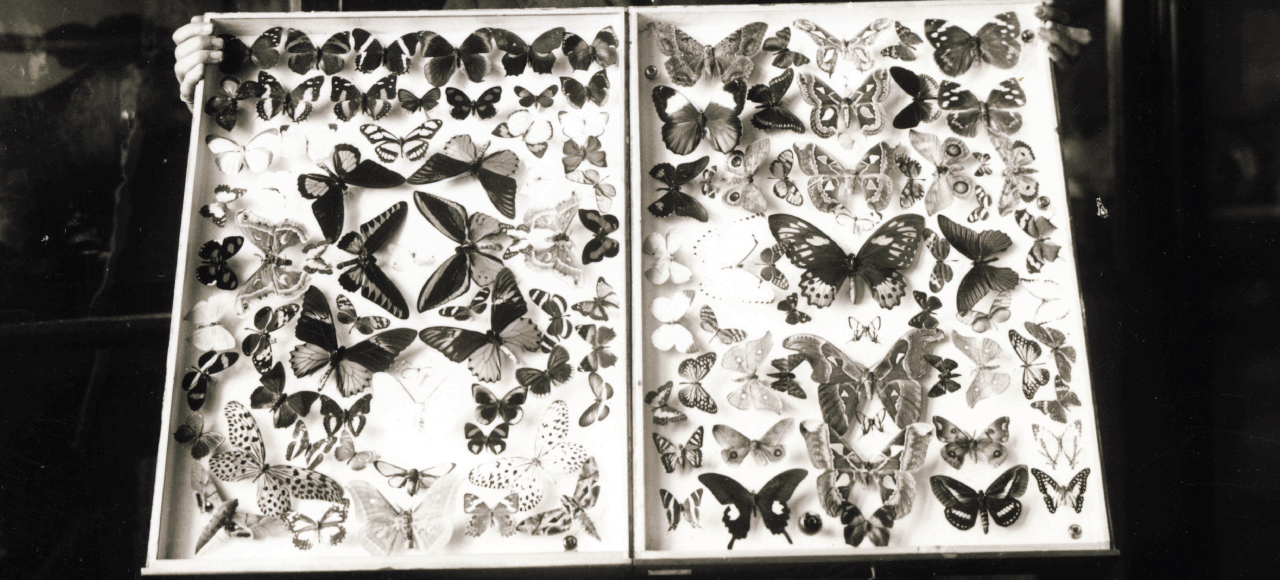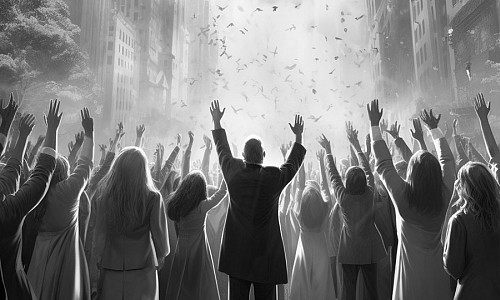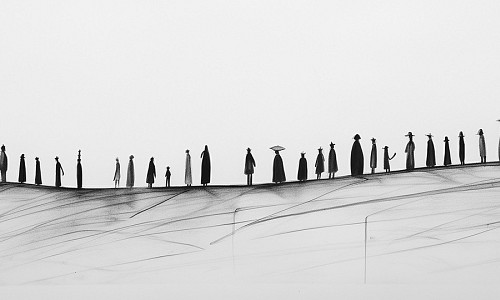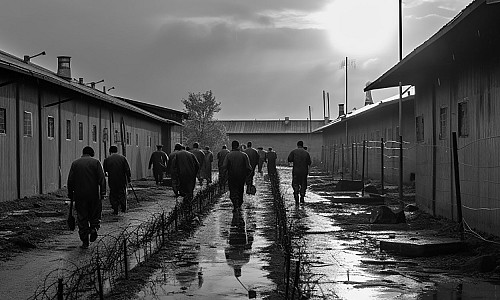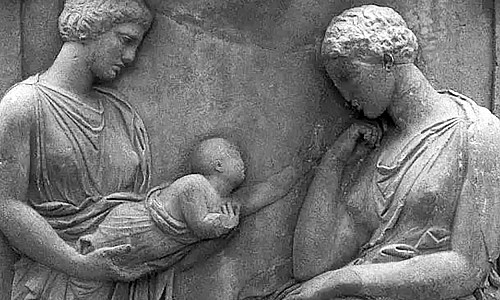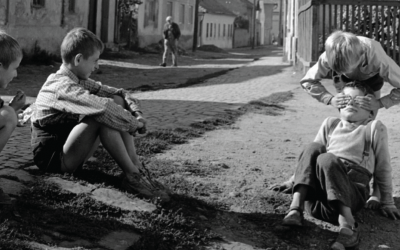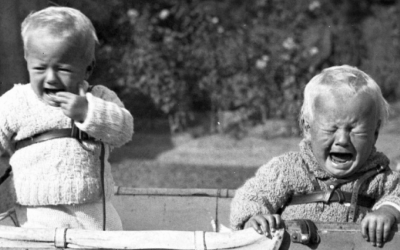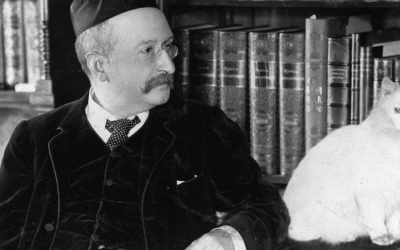Mary Midgley on mistakes in our thinking about evolution, function, and self.
What is an evolutionary function and how does it work?
I noticed how confused current views about this are when I read a recent piece in the Guardian about how entomologists hunt the impressive Purple Emperor butterfly. Apparently they must lay out its favourite diet, which is chiefly carrion and various kinds of faeces. The writer says that Victorian observers were distressed by these tastes in such a noble animal and “observed these degraded moments with a morbid fascination. For the emperor, however, it is not a question of taste. It is thought that the males replenish themselves after mating with sodium and other chemicals from the rotting matter.”
Thus we see the conscientious butterfly holding its proboscis and resolutely taking its medicine so as to be sure of keeping its love-life in order ... And this is the sort of picture that constantly emerges from contemporary evolution-talk, a picture that mixes up two quite different kinds of purpose. The butterfly’s own subjective purpose concerns what it wants to do. But the possible effect on the survival of its species is an evolutionary function, of which the butterfly knows nothing.
It is not surprising that these two ideas get mixed today. Official scientific thought doesn’t now try to distinguish between different forms of purpose; indeed it hardly recognises the concept of purpose at all. Subjective purposes – motives – were outlawed from science-speak by the behaviourists, along with the rest of our inner life. Though their effects are obviously real, they were blotted out so successfully from the perception of the learned that many conscientious thinkers still don’t dare to look at them. Instead, in a way that would have delighted B. F. Skinner, they still try to account for physical actions directly in physical terms. They pick out distinct behaviour-patterns and try to link each to an evolutionary function of its own, without reference to its meaning or its social context.
A recent controversy about the origins of nose-picking in humans showed the oddity of this. Since this habit is common, scientists suggested an amazing number of arcane physical mechanisms by which it might have directly improved people’s survival-prospects. What nobody did was to ask about this habit’s relation to motives – for instance to curiosity, to our tendency to explore and investigate things. Like other primates we like to pry into mysterious places such as holes and this interest surely has affected our species-survival in many ways, both helpful and otherwise. The details of the endless acts that it produces don’t matter; what affects survival is the general interest. Thus, human behaviour is not a ragbag of disconnected behaviour patterns with separate evolutionary histories. What evolves is an emotional constitution which shapes our lives as a whole. We have to explain particular actions by finding their place in it.
Thus, when we want to understand a real person’s action we always start by looking for the motivational context. We try to spot the particular reason for the act and then to place it on our general map of motivation – a map which we must all use as we try to find our way through everyday life. We ask, was that clumsy remark just a misplaced effort to be helpful? Did it express resentment? Was it even part of a spiteful scheme to make trouble? Or perhaps a bit of all three? This interest in subjective matters is, of course, not to be dismissed as somehow culpably subjective itself. It is a factual enquiry – not a fantasy, not just “folk-psychology”, not a crude, amateur substitute for scientific investigation. It is the only way we can start to make sense of the life that goes on around us. Of course it is fallible, but on the whole it works, and its success is one of the things that science needs to investigate. Evolutionary considerations are no substitute for it.
Another interesting case concerns something more important than nose-picking – the origin of speech. In his book Human: The Science Behind What Makes Us Unique, Michael Gazzaniga considers a problem raised by the evolutionary psychologist Geoffrey Miller:
“Most speech appears to transfer useful information from the speaker to the listener, and it costs time and energy. It seems to be altruistic. What fitness benefit can be attained by giving another individual good information? Reviewing the original argument of Richard Dawkins and John Krebs, Miller states, ‘Evolution cannot favour altruistic information-sharing any more than it can favour altruistic food-sharing. Therefore, most animals’ signals must have evolved to manipulate the behaviour of another animal for the signaller’s own benefit.’ And other animals have evolved to ignore them, because it didn’t pay to benefit the manipulators.”
Miller then asks how it can be that our species has managed to buck this trend by actually developing speech. His conclusion is, says Gazzaniga, that “language’s complexities evolved for verbal courtship. This solves the altruism problem by providing a sexual pay-off for eloquent speaking by the male and the female.”
Marilynne Robinson, who quotes this jewel of speculation in her splendid book Absence of Mind, points out how odd it is to credit courtship with having played such a crucial role in the history of our species, when we know that traditional human societies have usually treated marriages as strictly family business, dealt with by the elders, not by the parties concerned. More centrally too, she remarks on the wildness of this approach in which “our nature is defined as if determined by the nature of hypothetical primitives, humanlike in their ability to have and give information, but finding neither use nor pleasure in doing so.”
The trouble is that theorists who think natural selection can only work by cut-throat competition between individuals pursue that pattern obsessively, without glancing at the social phenomena they are supposed to be explaining. Thus, Miller does not seem to have noticed that speech does not just convey separate bytes of information to be carried home and secretly devoured in one’s lair. Speech, like the rest of communication, is a vital medium, an ambient ocean in which we all swim, one which allows us to make a whole mass of essential social moves. As Wittgenstein remarked, we need to use it for “asking, thanking, cursing, greeting, praying”, in short, for all kinds of interactions which enrich our lives. Though these scholars presumably know, like the rest of us, that a direct wish for particular kinds of deal with other people constantly determines our social activities, they still believe that, behind this screen, there lie hidden the real causes, elements of evolutionary advantage which affect ourselves alone. However hard that advantage may be to find – however little evidence there may be that could possibly reveal it – it is still the real McCoy.
This preference for supposed hidden causes over obvious ones is surely not a parsimonious way of thinking and neither, as it happens, is it Darwinian. In The Descent of Man Darwin argued strongly that we are not just a sociable species but are naturally more sociable – more co-operative, affectionate and interdependent – than any of our relatives. Our social instincts are, he said, so crucial to our lives that they must have been strongly developed during evolution by means of group-selection – by the differential survival of coherent, friendly groups over less interactive ones. These instincts therefore now ground our motives and shape the complexity of our lives. So the idea of deriving all our motivation from the single stem of “selfishness” – enlightened self-interest – is, says Darwin, radically mistaken.
That suggestion was, of course, suppressed and thrust aside in the mid-twentieth century because it involved group-selection. At that time, evolutionists made selection at only one level into a compulsory orthodoxy. Rationality demanded (it seemed) that competition should take place only between a single set of rivals – evolutionary atoms which profited from the process. These units, which at first had seemed to be individual organisms, were finally deemed to be the genes and were treated as independent agents in a way that seemed to credit them with having purposes of their own. The imagery of “selfishness”, which expressed the supposed isolation and eager activity of these rivals, was seen as crucial for the process.
The resulting mythology of selfishness suited the Thatcherite age so well that the story seemed, for a while, convincing to many scientists as well as to the public. Later, however, serious cracks began to appear in it, not least because it was clear that genes themselves were not actually solitary but highly co-operative. It emerged that the simple atomistic pattern was neither workable nor necessary, that natural selection can perfectly well take place at a number of different levels between units of different kinds. As David Sloan Wilson put it:
“The past half-century was the age of reductionism, when everything was explained in terms of individual self-interest and selfish genes. Now we are entering the age of holism which recognises how colonies of social insects, human societies and at least some multispecies ecosystems can respond as a single ‘superorganism’ to selective pressures.”
Similarly, Edward O. Wilson, whose book Sociobiology: The New Synthesis had been one of the bibles of the individualistic doctrine, has now moved away from it and thinks other patterns, such as group-selection, can give better explanations even for the social insects which are his speciality and which were viewed for a time as prime examples of gene-selection.
David Sloan Wilson also points out that group-selection is particularly plausible in the case of humans because of the invention of speech. A group that can talk is able to pass round, and to profit from, any new invention far faster than any new developments could ever be spread genetically. In this way a new hunting-method, a new cooking pot or a new style of government can give great advantages to a human group which is co-operative enough to produce them, making them more successful than their neighbours who don’t bother to talk to one another. Speech, in fact, does have its evolutionary advantages – but only for groups of people who like each other enough to attend to their neighbours.
Yet another interesting case of confusion about evolutionary function concerns Darwin’s discussion of sexual selection – the choosing of mates and its effect on the progeny. He added this long, separate section to The Descent of Man because he clearly saw it as an important supplement to his general account of natural selection. But the name he gave it seems odd. In the text he repeatedly contrasts sexual selection with natural selection as if it were something unnatural. What he seems to mean is that ordinary, proper natural selection is the kind which works simply by differential dying – by one kind of variant being lost in greater numbers than another.
He did, of course, believe that this was the main source of evolutionary change, and it was the only source that he talked about in The Origin of Species. But he was always sure that it was not the only source, and got annoyed when people claimed he thought it was the only one. No doubt this was because he could see that this explanation alone could not possibly be adequate. Selection by differential survival is only a filter, and filters have no originative force. They do not create the coffee which flows out of them. This was surely why Darwin was still interested in Lamarck’s suggestion that acquired characteristics were somehow inherited, even though he could not see how.
Besides this, however, he saw yet another kind of selection which was visibly taking place in the world around him, a literal kind rather than a metaphorical one – the process by which creatures choose their mates. He had watched them doing this and had seen its effects in the decorations that so many animals wear – especially animals with a strong visual interest, such as birds and insects. He saw that these ornaments often seemed to have no other function and that some of them only appeared during mating displays. So he documented their effectiveness and illustrated it with careful drawings.
His readers, however, did not readily believe him. Scientists found it absurd to suggest that something so trifling and capricious as the taste of individual birds – especially female birds – could have such a momentous effect. They agreed that the ornaments in question were indeed amazingly, unaccountably subtle and beautiful. But this only made them even less willing to believe that mere animals could ever have appreciated them. Repeatedly, Darwin showed his reasoning about this:
“The case of the male Argus pheasant is eminently interesting, because it affords good evidence that the most refined beauty may serve as a charm for the female, and for no other purpose. We must conclude that this is the case, as the primary wing-feathers are never displayed, and the ball-and-socket ornaments are not seen in their full perfection, except when the male assumes the attitude of courtship.... Many will declare that it is utterly incredible that a female bird should be able to appreciate fine shading and exquisite patterns. It is undoubtedly a marvellous fact that she should possess this almost human degree of taste, though perhaps she admires the general effect rather than each separate detail. He who thinks that he can safely gauge the discrimination and taste of the lower animals, may deny that the female Argus pheasant can appreciate such refined beauty; but he will then be compelled to admit that the extraordinary attitudes assumed by the male during the act of courtship, by which the wonderful beauty of his feathers is fully displayed, are purposeless; and this is a conclusion which I for one will never admit.” (emphases mine)
What was obvious to him, but apparently quite invisible to his critics, was that human tastes too arise out of our nature as animals. (Similarly, we might notice that the Purple Emperor is not the only animal that eats its meat high, or that has a taste for salt). Darwin touched on this delicate issue when he discussed the various features in animals which appear to work as ornaments for them, though they don’t strike us as beautiful. He writes:
“No certain answer can be given to these questions; but we ought to be cautious in assuming that knobs and various fleshy appendages cannot be attractive to the female, when we remember that with savage races of man various hideous deformities – deep scars on the face with the flesh raised into protuberances, the septum of the nose pierced by sticks and bones, holes in the ears and lips stretched widely open – are all admired as ornamental.”
Even human observers, in fact, don’t necessarily have faultless tastes or ones that agree with our own. Their preferences differ from culture to culture. We do find, however, that people in different cultures commonly share some basic aesthetic judgements. And as it happens, one of the points on which different societies most readily agree is a widespread admiration for the elegant plumes of birds, which are sought out and used as ornaments in a great range of cultures.
Who, however, designed these supremely elegant feathers? Certainly not a human. If Darwin is right, the artists here seem to have been the birds themselves, which means (since the males usually have the best feathers), primarily their wives. So is there not something oddly condescending about scientists presuming to doubt whether these original designers are themselves capable of the “almost human degree of taste” which would be needed to appreciate their work?
There were, I think, two reasons why Darwin’s critics found his suggestions here so disturbing. One, of course, was simply the species-barrier, the habit of considering humans as so totally different from other animals that it became almost impossible to use the thought of continuity between them, even when argument showed it was necessary. This was, of course, always a main source of difficulty about accepting his reasoning, which offended against notions of the dignity of man far more directly than against the status of God. But there is another obstacle here which is equally strong but perhaps less obvious, namely unwillingness to treat any subjective phenomenon as a serious influence in the world.
Darwin was suggesting that the wishes of hen-pheasants – their inner thoughts and feelings as they watched their various suitors – had affected, and had finally determined, the design of later generations. This thought is frightening, not only when it concerns animals but even more when it concerns people.
Of course it is never easy to accept the role that the thoughts and feelings of our own parents – and indeed of everybody else’s – on similar occasions have played in making things be as they are now. Yet we know that these thoughts and feelings, not only then but throughout their lives, have indeed had this sort of importance. Our own thoughts and feelings – the constant flow of inner activity by which we respond to the life around us – also affect the world as well as our outward actions. This thought is so frightening that scholars will often go to any lengths to avoid it, which is why that ludicrous doctrine epiphenomenalism still has supporters, and why people spend so much more of their time on sociological statistics, neurological details and speculation about evolutionary function than on studying motive.
Thus the picture of natural selection which was shaped around Darwin’s main proposals used only two sombre colours – black for death and white for survival. Nature appeared in it only as an obsessive accountant, spectacles on nose and ledger in hand, testing every action in those terms and destroying the failures. Any trait still appearing in the world was deemed to have passed her audit in some distinct, discoverable way which constituted its evolutionary function.
This figure of Nature is, of course, quite unlike the sort of nature that we actually find at work in the animal and vegetable world, where it is notoriously a cornucopia, a wildly lavish scatterer of endless seeds and young, a generous, profuse, imprudent source of new life. And when we consider our own motives, we see that this vegetatious figure is a far better likeness of the kind of nature that animates us inwardly. Life for us is not just the absence of death. Life consists of endless crowded wishes, fears and activities, all primed by their own immediate aims and interests, not by long-term prudence. Like other conscious creatures we usually take action because we want to, and if our nature did not provide us with many vigorous wants we could not act at all.
Of course it is true that if a particular innate taste, such as a taste for eating toadstools, has fatal consequences it will tend to be wiped out from the species’ repertoire. But, in all kinds of animals, a huge number of wishes have no particular effect at that level and work only for the general enrichment of life. If you watch seagulls swooping and rising you will not be inclined to think that they are only taking the exact amount of exercise that they need to keep their constitution in optimal health, and the same goes for human children.
It seems perfectly possible, too, that some tastes persist, even though they actually harm survival-prospects, because other characteristics outweigh this damage. After all, even the human physique has notorious imperfections, such as the bad design of our throats, where food and breath get into dangerous competition. Similarly, the splendid tails of peacocks are notoriously awkward for their flight, yet peacocks are still with us. This has been seen as a grave objection to the sociobiological insistence that everything has an evolutionary function.
Helena Cronin produced an ingenious solution to this by suggesting that the fault really acts as an advertisement, letting the hen know that this must be a particularly powerful male since he has been able to get away with carrying such a fearful burden. In this way, of course, every drawback can count as an asset, and the principle that there is always a survival-function can still be saved. But unfortunately it is saved, rather as Freudian principles used sometimes to be, by losing its meaning.
One way and another, then, the attempt to seek out an evolutionary advantage behind every human taste – including, say, the taste for doing mathematics, for jokes and laughter, for music and poetry, for play, for sympathy or for quarrelling – is perverse and empty. These are things that are done for their own sake because they fulfil our nature. The tendency at present is to connect them all with evolution by claiming that they are bond-forming and so promote survival. But the kind of bond that is formed in each case is different and the effects on survival are infinitely varied. This suggestion does nothing to explain the peculiar character of these various occupations. To understand them, we need to look at the distinctive part they each play in real life, not at speculations about how they might possibly have prevented some distant ancestor from dying.
It is clear that Darwin for one did not think that was the only way of explaining motives. The case of the Argus pheasant shows, he says, that “the most refined beauty may serve as a charm for the female, and for no other purpose”. Of course he was not denying that successful courtship as a whole serves another kind of purpose in its effect on the species. But he sees that the immediate point of these activities must lie in its meaning for the creatures that are acting. This subjective aspect is its central function.
He did not, then, invent a just-so story – as his successors might well do now – to make this fit neatly into his views on natural selection. Instead, he added a whole new, detailed section to his work, dealing with selection in a quite different sense. Here he stuck to the actual cocks and hens involved and showed how these factors work in their lives. He openly talked of subjectivity and used words such as charm and beauty that are appropriate to it. This language embarrasses his successors, so they tend to sideline his suggestions as being naïve and old-fashioned. In their view all subjective phenomena are merely superficial appearances, perhaps actually illusions. The reality behind them is always an evolutionary function, which sounds reassuringly objective because the word function suggests machines.
Machines, however, are not value-free. They always have a purpose. They exist to do some particular thing which their designers wanted. And the whole project of scientific positivism was to eliminate all such wanting from descriptions of the natural world. Positivists ruled that these descriptions should consist only in statements of fact. The behaviourists’ attempt to ignore motives, which we mentioned earlier, was part of this grand enterprise, which is often expressed by saying that teleology is obsolete.
The word teleology, however, covers not just conscious purposes but the whole of function. Aristotle, who first worked out this kind of reasoning, never based it on the purposes of a creative god, which was an idea quite alien to Greek thought. He used it simply for the kind of questioning which asks what particular things are for – what is their telos, their end or aim in the context where they belong. As he pointed out, this kind of reasoning is so indispensable in biology, and the aims it seeks are usually so obvious, that no other way of thinking can displace it. All organisms constantly strive towards their own survival, their health, their well-being, their general fulfilment and their reproduction. An acorn placed under a stone will do its damnedest to get out past it and to fulfil exactly the ambitions that are proper to an oak-tree. Human conscious purpose is not the prime model here, it is just one form of a universal tendency. These are the only terms in which the behaviour of living things can be understood at all.
But is this also true of a vast process like evolution?
In theory, today’s scientific thought totally excludes such ideas. Officially, to say that feet are organs for walking on is only to say that that this is what they do. But this formula is so unrealistic that people seldom try to follow it. The language of adaptation and selection proceeds quite naturally, as it always has done, by assuming an aim.
This habit is greatly helped by the word evolution itself, which has always carried the implication of a guiding purpose. Like development, this word means the unrolling of something like a scroll or a bud, the fulfilment of a given potentiality. And the various evolutionary prophets all had their views about this pre-existing direction, views shaped by their own values. Herbert Spencer defined the word as meaning “an integration of matter and concomitant dissipation of motion, during which the matter passes from an indefinite, incoherent homogeneity to a definite, coherent heterogeneity”, from which he swiftly concluded that there is nothing so dangerous as big government, and that the feckless poor must be stopped from distorting evolution by breeding too freely. Rather differently, Julian Huxley taught that a deep, scientifically-guided reverence for the evolutionary process provides a kind of humanism which is the best modern substitute for religion. But his humanism too required eugenics, since we ourselves are now the growing-point of evolution, so we have a duty to direct it rightly. The cosmologists John Barrow and Frank Tipler took a more remote perspective, describing evolution as consisting in a prolonged development of Life, first in human form and later through a series of computerised cosmic probes, which would colonize space and finally, at the Omega Point, take over the universe, thus becoming God. And so on.
These suggestions were all, in their day, considered as scientific, but none of them is popular with scientists today. Spencer’s and Huxley’s eugenic ideas have been put out of fashion by the Nazis, while the cosmic alternative exists now mainly in science-fiction. What officially prevails now among many scientists is the seemingly more sceptical view that the cosmos is meaningless – that, as Richard Dawkins puts it, the universe contains, “at bottom, no design, no purpose, no evil and no good, nothing but blind, pitiless indifference” This sounds value-free enough. Unexpectedly, however, Dawkins then goes on to write “DNA neither cares nor knows. DNA just is. And we dance to its music”.
This, then, is still the same highly teleological story that we heard in The Selfish Gene. We are still lumbering robots, unable to escape the manipulating hands of the genes. This means that the genes themselves must have a purpose and a vast, cosmic purpose at that. They must also have some fairly supernatural powers, since (rather surprisingly) they apparently rule our universe
This lush background mythology of gene-selfishness supplies the teleological jam that is always needed to make a thin scientific story go down. And the confident certainty of finding evolutionary functions for everything provides it with a plausible background. In fact, as many people have pointed out, if you try to sling out Nature – or indeed the whole idea of Nature – through the door, she always comes quietly back down the chimney. And this may leave you worse off than you were before.
Mary Midgley is author of The Solitary Self: Darwin and the Selfish Gene
You might also like...
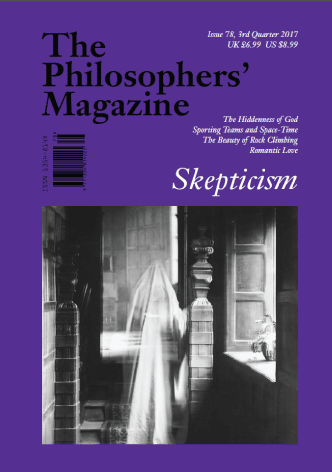
Subscribe to The Philosophers' Magazine for exclusive content and access to 20 years of back issues.

